by Ali Birston ~ March 24th, 2011
Fun Fact: If nobody ever posted another video on youtube you would need about 1,700 years to watch everything currently on the site!
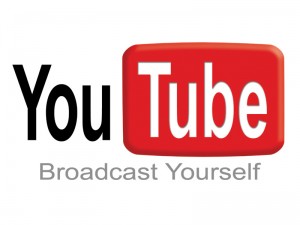 It’s mind boggling to think that YouTube.com was only founded in 2005 as it is now so incredibly popular that watching a video on youtube has become just about as common as checking your email. Originally started to share videos that were too big to send via email, this website now enables millions of people to upload videos and share them with the world.
It’s mind boggling to think that YouTube.com was only founded in 2005 as it is now so incredibly popular that watching a video on youtube has become just about as common as checking your email. Originally started to share videos that were too big to send via email, this website now enables millions of people to upload videos and share them with the world.
After reading Beverly Cheng’s blog post titled “Viral Videos” I was baffled when I considered the power of youtube and the ability of videos to go viral within hours. I completely agree with her comment about the risks of using these types of social media, however, I also think that the benefits certainly outweigh the potential problems. While for Rebecca Black’s “Friday” music video, she was getting attention for all the wrong reasons, there are also cases where talent has been discovered (massive success story: Justin Bieber) and brands are being promoted positively. In my opinion, youtube is a key channel for marketers to consider when developing their promotional strategies as it is free and has the potential to reach consumers all over the world.
So what is it that makes a video go viral? That is the key question that marketers must answer, however, unfortunately there is no exact formula. Videos that have had record-breaking views such as the “Charlie bit my finger” video are often quite odd, cute, or plain hilarious and make people want to share them with their friends and social networks. If marketers can successfully tap into the minds of their consumers to figure out what motivates them to watch and share a video and/or what makes them laugh, then they are well on their way to creating the next big youtube sensation!

Photo from: http://www.sync-blog.com/sync/2010/03/youtube-24-hours-of-video-uploaded-every-minute.html
Filed under: Comm 296 | No Comments »
by Ali Birston ~ March 9th, 2011
If you’re the type of person who likes to search for a deal then I’m sure you’ve heard of Groupon, but for those who are still out of the loop, here’s how it works.

What started off as a simple enough concept has turned into a mega-successful phenomenon that has got everyone hooked on deals. According to the New York Times, “in just over two years, Groupon has accumulated 60 million subscribers, more than $1 billion in venture capital and $760 million in annual revenue to become the fastest-growing Web company ever.” What’s even more shocking is that last December, Groupon declined a 6 billion dollar offer from Google.
Groupon caters to many different types of consumers due to their wide variety of daily coupons; however, they are also strategic in that they are able to personalize deals for individuals based on specific geographic and demographic variables. In addition, by integrating with various social media platforms such as Facebook, Groupon allows you to share deals with friends and also gives you incentives to refer friends by offering you Groupon Bucks as a reward.
 By offering such massive discounts (most over 50% off) you’d think that companies would lose money by offering coupons, however, the brand and company awareness that Groupon indirectly provides businesses is undeniable and the resulting buzz created from consumers is invaluable. Offering such amazing deals also increases that business’ sales exponentially and once a customer is satisfied with one experience at that company they may become loyal customers who purchase products on a regular basis.
By offering such massive discounts (most over 50% off) you’d think that companies would lose money by offering coupons, however, the brand and company awareness that Groupon indirectly provides businesses is undeniable and the resulting buzz created from consumers is invaluable. Offering such amazing deals also increases that business’ sales exponentially and once a customer is satisfied with one experience at that company they may become loyal customers who purchase products on a regular basis.
I know that I have been enticed to buy some of Groupon’s featured deals of the day such as a coupon for bungee jumping in Whistler, and if you have yet to jump on this bandwagon I strongly suggest you do before the best deals are gone!
Photo from: Best Android Apps Review
Article from: The New York Times
Filed under: Comm 296 | No Comments »
by Ali Birston ~ March 6th, 2011
Rrrroll up the rim to win! This has become quite the catch phrase on campus recently as sleep-deprived students all over UBC flock to the nearest Tim Hortons for their daily dose of caffeine. After weeks of stressful midterms, projects, and presentations it is safe to say that there has been an increase in demand for coffee on campus these days. Tim Hortons’ annual Roll up the Rim contest is back once gain and the never-ending lines of students hoping for a chance to win a brand new car or even just a free coffee is astonishing.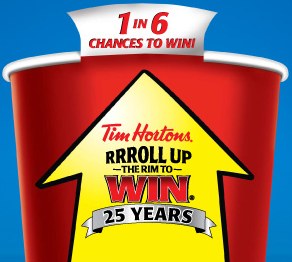
As one of the students waiting in this line myself, I finally took the time to contemplate the strategy behind this promotion and was blown away by how simple yet effective it really is. For the most part, university students are strapped for cash, so in terms of price point, Tim Hortons is certainly a more attractive option; however, the customized coffee and prestige of Starbucks often proves more valuable to students. This is where the Roll up the Rim contest comes in as an added incentive that students like myself just cannot pass up. Not only is rolling up the rim in itself pretty amusing, but as an added bonus you may just end up winning a brand new car, TV, bike, or barbecue! Although we all know the chances are slim, I’ve personally already won 2 free coffees so I can definitely not complain.
Although this promotion is short-term in nature it certainly helps Tim Hortons attract new customers as well as develop customer loyalty. It keeps consumers coming back for more to increase their chances to win and also creates a fun experience for both first time and long time customers alike. It’s a contest that ingeniously markets itself through word of mouth and that’s got everyone excited to rrrroll up the rim to (hopefully) win!
Filed under: Comm 296 | No Comments »
by Ali Birston ~ February 20th, 2011
Are diamonds really a girl’s best friend?
Given the long-term success of the Tiffany & Co. brand, it sure seems like it! Tiffany & Co. has been around for over 170 years and somehow has remained popular among women all over the globe to this day. Their jewelry is quite expensive despite it’s simplicity, so how have they managed to build their enormous success?
The answer: an incredibly strong and recognizable brand.

After reading Mikayla Chan’s post titled “Tiffany & Co.: STP” I was inspired to do a little research of my own about this company for which I have always had a great love for (despite not owning a single piece of jewelry from there…well yet). I definitely agree with her STP analysis and in the fact that they have successfully positioned themselves as a high class upscale jewelry retailer mostly to men looking for a special gift; however, would like to add my insights as to their branding and why it has helped them achieve such incredible success.
What differentiates Tiffany’s is their brand reputation and brand associations. Their brand awareness is extremely high among consumers and according to their management, “the Tiffany & Co. brand is the single most important asset of the company”. When the name Tiffany & Co. is mentioned, the words romance, luxury, and class all come to mind, and because of this high perceived value, consumers are willing to pay a premium.
Their advertising is simple yet chic and their reputation for quality is undeniable. The brand identity, higher prices and luxurious store atmosphere all help Tiffany & Co. stand out in the industry. And after all who wouldn’t be absolutely thrilled to untie the white ribbon on the unmistakable little blue box!
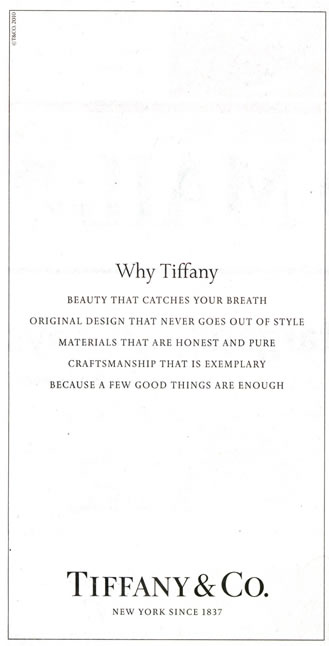
Another interesting blog post: “How to Succeed like Tiffany & Co.”
Pictures: http://make-upoverdose.blogspot.com/2010/07/tiffany-co-launches-bag-collection-in.html
http://blog.tonyjohnston.biz/?p=2350
Filed under: Comm 296 | 1 Comment »
by Ali Birston ~ February 11th, 2011
As many of you may know, this weekend’s Super Bowl XLV beat the all time record for number of viewers by recording an estimated average viewership of 111 million! However, what you may not have considered is the huge impact this has on companies who had the remarkable opportunity to advertise during the game. With a record breaking 111 million viewers, the ads played during the game now consist of the most watched ads of all time.
Although I am not a big football fan, I must admit that even I usually tune in once a year to the Super Bowl, although maybe not for the game itself. And after doing a bit of online research it seems that I’m not the only one who has ulterior motives. According to a poll conducted by television audience researcher Nielson of Super Bowl viewers last year, 51% tuned in more to watch the commercials than the game itself.
With such a large number of viewers tuning in and the majority of them watching because of the ads themselves, it seems to me like a golden opportunity for companies to take advantage of. However, realistically the 3 million dollar price tag for a 30 second ad spot is just not feasible for any company. Only the biggest and best companies come out to play during the Super Bowl in an all out battle for the minds and attention of their captive audience.
This year, one of my favourite ads was for Pepsi MAX titled “Love Hurts”. The scenes depicting a controlling wife prove to be quite comical and also quite effective in repositioning Pepsi MAX as a low calorie yet great tasting alternative that also appeals to men.

Another ad that I found absolutely hilarious yet very bizarre at the same time was an ad for Doritos called “The Best Part”. Although slightly odd, it was certainly unique and quite memorable (a quality that I’m sure all marketers strive for in their advertisements).

Who will have the best ad in next year’s Super Bowl, we’ll just have to wait and see!
Filed under: Comm 296 | No Comments »
by Ali Birston ~ February 2nd, 2011
Iphone or Blackberry? It is tricky question that I’m sure almost every consumer looking to invest in a new phone has asked themselves or their friends at least once in their decision making process.
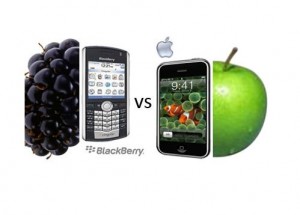 Since a phone may be classified as a shopping good and requires a certain degree of financial and psychological risk, I knew that when personally making this decision it was going to require quite an extensive search for information. The only two phones that were part of my evoked set and that I was actually considering as my alternatives were of course the two most popular: the iPhone or the Blackberry. First things first, I needed the facts. I began my research process internally by examining my prior knowledge and experiences with both of the products, and then quickly moved on to my external search by asking people I knew and trusted.
Since a phone may be classified as a shopping good and requires a certain degree of financial and psychological risk, I knew that when personally making this decision it was going to require quite an extensive search for information. The only two phones that were part of my evoked set and that I was actually considering as my alternatives were of course the two most popular: the iPhone or the Blackberry. First things first, I needed the facts. I began my research process internally by examining my prior knowledge and experiences with both of the products, and then quickly moved on to my external search by asking people I knew and trusted.
Of the many influencing factors, my social reference groups were certainly the most significant. I got mixed reviews from friends, however was very biased right off the bat from my family’s rave reviews of the iPhone. Of course there were other factors that were a part of my evaluative criteria and that influenced me as well. The design of the apple phone is much more unique and the promotions are quite impressive to say the least. My busy student lifestyle also factored into the equation as it is crucial that I be able to have the necessary applications and texting functionality. The price wasn’t really an issue as it was going to be a gift, however, contract promotions from different companies made certain options more affordable.
With so many things to consider, the decision was a tough one, but when it came down to the final purchase decision the winner was………
The iPhone.
One month later and I can honestly say I’m one satisfied consumer. No post-purchase dissonance for me!
Filed under: Comm 296 | 1 Comment »
by Ali Birston ~ January 20th, 2011
Although there are many things that influence consumer behaviour these days, I’d still have to say that advertising plays a huge role in what we choose to purchase. However, what if the ads that are influencing our decisions are leading us to believe things that aren’t true? The fact of the matter is, you’d feel pretty disappointed and completely jipped if the product you purchased did not live up to the promises and expectations created by the ad.
 A recent post on Seth Godin’s Blog titled “Raising Expectations (and then dashing them)” discusses this idea and goes on to further explain how this type of marketing strategy can actually be damaging for a company in the long run.
A recent post on Seth Godin’s Blog titled “Raising Expectations (and then dashing them)” discusses this idea and goes on to further explain how this type of marketing strategy can actually be damaging for a company in the long run.
As an example, say you see an ad on TV promoting Wal-Mart. The image that they portray is that all of their employees are overly friendly and willing to help and that they provide the lowest prices around. If you were to go into Wal-Mart the next day only to find that their prices were excessive and their employees were grumpy, you would surely be disappointed, and as Seth rightly points out, maybe even more disappointed than if you had walked in with no prior expectations.
Although we want to believe that a company will live up to the expectations that its ads create and may initially give it a try because of them, if it doesn’t meet or exceed those expectations, there is no way that we are going to become loyal customers or even customers of that particular brand at all.
 So if this type of marketing strategy is ultimately decreasing user satisfaction and creating disappointment among consumers, why do companies continue to use it? I completely agree with Seth’s suggestion that it is much better to put your money to good use to embrace and satisfy the customers you already have rather than spend it on trying to attract new customers if you are only going to let them down.
So if this type of marketing strategy is ultimately decreasing user satisfaction and creating disappointment among consumers, why do companies continue to use it? I completely agree with Seth’s suggestion that it is much better to put your money to good use to embrace and satisfy the customers you already have rather than spend it on trying to attract new customers if you are only going to let them down.
Filed under: Comm 296 | No Comments »
by Ali Birston ~ January 15th, 2011
As one of the world’s largest and most well known coffee companies, Starbucks is a brand that has gained a reputation for excellence and has maintained a strong commitment to customer service and corporate social responsibility. The company first started in Seattle in 1971; however, it is safe to say that a lot has changed since then, so shouldn’t Starbucks as well?
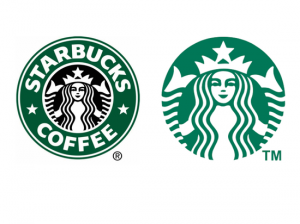 Surely enough, they’ve finally caught on, and that is what they are in the process of doing right now. In addition to celebrating their 40th anniversary this year, Starbucks is launching a brand new logo! The new image is much simpler in its design and no longer includes any wording. Will this new logo cause a commotion with loyal consumers who have become so attached to the traditional cups or will it give the company even more opportunities to expand in the future?
Surely enough, they’ve finally caught on, and that is what they are in the process of doing right now. In addition to celebrating their 40th anniversary this year, Starbucks is launching a brand new logo! The new image is much simpler in its design and no longer includes any wording. Will this new logo cause a commotion with loyal consumers who have become so attached to the traditional cups or will it give the company even more opportunities to expand in the future?
According to CEO Howard Schultz, the new logo respects Starbucks’ heritage, but also gives the brand the freedom and flexibility to think beyond just coffee. As the company expands into the production of other products, this may be the change that Starbucks needs to maintain their position as one of the leading coffee brands worldwide.
Branding is crucial when it comes to Starbucks’ products. In my opinion, their incredibly recognizable cups have given them a competitive advantage in the industry as people want to be seen carrying a Starbucks coffee because of what the brand and logo portray. For all of the millions of Starbucks fanatics out there this change may come as a shock; however, overall it is a great strategic move for the company and one that is sure to help them further develop and grow not only in the coffee industry but in the minds of their consumers.
Starbucks CEO discusses the new logo
Filed under: Comm 296 | No Comments »
 It’s mind boggling to think that YouTube.com was only founded in 2005 as it is now so incredibly popular that watching a video on youtube has become just about as common as checking your email. Originally started to share videos that were too big to send via email, this website now enables millions of people to upload videos and share them with the world.
It’s mind boggling to think that YouTube.com was only founded in 2005 as it is now so incredibly popular that watching a video on youtube has become just about as common as checking your email. Originally started to share videos that were too big to send via email, this website now enables millions of people to upload videos and share them with the world.










